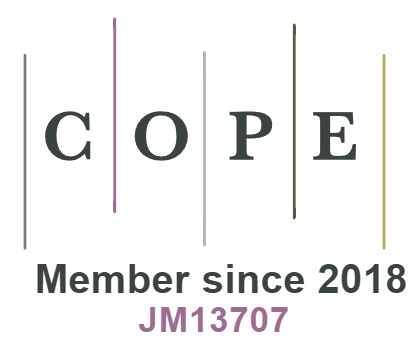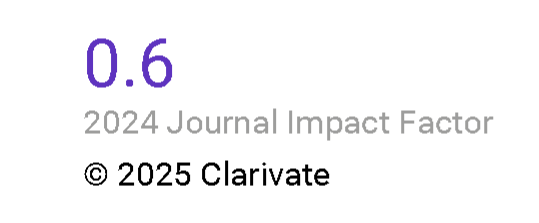An Inferentially Many-Valued Two-Dimensional Notion of Entailment
DOI:
https://doi.org/10.18778/0138-0680.46.3.4.05Keywords:
Inferential many-valuedness, two-dimensional entailment, B-matrices, B-consequence relations, monotonic consequence relations, q-entailment, p-entailment, Suszko ReductionAbstract
Starting from the notions of q-entailment and p-entailment, a two-dimensional notion of entailment is developed with respect to certain generalized q-matrices referred to as B-matrices. After showing that every purely monotonic singleconclusion consequence relation is characterized by a class of B-matrices with respect to q-entailment as well as with respect to p-entailment, it is observed that, as a result, every such consequence relation has an inferentially four-valued characterization. Next, the canonical form of B-entailment, a two-dimensional multiple-conclusion notion of entailment based on B-matrices, is introduced, providing a uniform framework for studying several different notions of entailment based on designation, antidesignation, and their complements. Moreover, the two-dimensional concept of a B-consequence relation is defined, and an abstract characterization of such relations by classes of B-matrices is obtained. Finally, a contribution to the study of inferential many-valuedness is made by generalizing Suszko’s Thesis and the corresponding reduction to show that any B-consequence relation is, in general, inferentially four-valued.
References
[1] C. Blasio, Revisitando a lógica de Dunn-Belnap, Manuscrito 40 (2017), pp. 99–126.
Google Scholar
[2] A. Bochman, Biconsequence relations: A general formalism of reasoning with inconsistency and incompleteness, Notre Dame Journal of Formal Logic 39 (1998), pp. 47–73.
Google Scholar
[3] C. Caleiro, W. Carnielli, M. Coniglio and J. Marcos, Suszko’s Thesis and dyadic semantics, Research Report. 1049-001 Lisbon, PT: CLC, Department of Mathematics, Instituto Superior Técnico, 2003. http://sqig.math.ist.utl.pt/pub/CaleiroC/03-CCCM-dyadic1.pdf
Google Scholar
[4] C. Caleiro, W. Carnielli, M. Coniglio and J. Marcos, Two’s company: “The humbug of many logical values”, [in:] J.-Y. Béziau (ed.), Logica Universalis, Birkhäuser, Basel, 2005, pp. 169–189.
Google Scholar
[5] C. Caleiro, J. Marcos and M. Volpe, Bivalent semantics, generalized compositionality and analytic classic-like tableaux for finite-valued logics, Theoretical Computer Science 603 (2015), pp. 84–110.
Google Scholar
[6] J. M. Dunn and G. M. Hardegree, Algebraic Methods in Philosophical Logic, Oxford Logic Guides, Vol. 41, Oxford Science Publications, Oxford, 2001.
Google Scholar
[7] S. Frankowski, Formalization of a plausible inference, Bulletin of the Section of Logic 33 (2004), pp. 41–52.
Google Scholar
[8] S. Frankowski, p-consequence versus q-consequence operations, Bulletin of the Section of Logic 33 (2004), pp. 41–52.
Google Scholar
[9] S. Frankowski, Plausible reasoning expressed by p-consequence, Bulletin of the Section of Logic 37 (2008), pp. 161–170.
Google Scholar
[10] R. French and D. Ripley, Valuations: bi, tri and tetra, Under submission (2017).
Google Scholar
[11] L. Humberstone, Heterogeneous logic, Erkenntnis 29 (1988), pp. 395–435.
Google Scholar
[12] T. Langholm, How different is partial logic?, [in:] P. Doherty (ed.), Partiality, Modality, and Nonmonotonicity, CSLI, Stanford, 1996, pp. 3–43.
Google Scholar
[13] G. Malinowski, q-consequence operation, Reports on Mathematical Logic 24 (1990), pp. 49–59.
Google Scholar
[14] G. Malinowski, Towards the concept of logical many-valuedness, Folia Philosophica 7 (1990), pp. 97–103.
Google Scholar
[15] G. Malinowski, Many-Valued Logics, Oxford Logic Guides, Vol. 25, Clarendon Press, Oxford, 1993.
Google Scholar
[16] G. Malinowski, Inferential many-valuedness, [in:] Jan Woleński (ed.), Philosophical Logic in Poland, Kluwer Academic Publishers, Dordrecht, 1994, pp. 75–84.
Google Scholar
[17] G. Malinowski, Inferential paraconsistency, Logic and Logical Philosophy 8 (2001), pp. 83–89.
Google Scholar
[18] G. Malinowski, Inferential intensionality, Studia Logica 76 (2004), pp. 3–16.
Google Scholar
[19] G. Malinowski, That p + q = c(onsequence), Bulletin of the Section of Logic 36 (2007), pp. 7–19.
Google Scholar
[20] G. Malinowski, Beyond three inferential values, Studia Logica 92 (2009), pp. 203–213.
Google Scholar
[21] G. Malinowski, Multiplying logical values, Logical Investigations 18 (2012), Moscow–St. Petersburg, pp. 292–308.
Google Scholar
[22] J. Marcos, What is a non-truth-functional logic, Studia Logica 92 (2009), pp. 215–240.
Google Scholar
[23] D. J. Shoesmith and T. J. Smiley,Multiple-Conclusion Logic, Cambridge University Press, 1978.
Google Scholar
[24] Y. Shramko and H. Wansing, Truth and Falsehood. An Inquiry into Generalized Logical Values, Trends in Logic, Vol. 36, Springer, Berlin, 2011.
Google Scholar
[25] R. Suszko, The Fregean axiom and Polish mathematical logic in the 1920’s, Studia Logica 36 (1977), pp. 373–380.
Google Scholar
[26] A. Urquhart, Basic many-valued logic, [in:] D. Gabbay and F. Guenthner (eds.), Handbook of Philosophical Logic, Vol. 2 (2nd edition), Kluwer, Dordrecht, 2001, pp. 249–295.
Google Scholar
[27] H. Wansing and Y. Shramko, Suszko’s Thesis, inferential many-valuedness, and the notion of a logical system, Studia Logica 88 (2008), pp. 405–429, 89 (2008), p. 147.
Google Scholar
[28] R. Wójcicki, Some remarks on the consequence operation in sentential logics, Fundamenta Mathematicae 68 (1970), pp. 269–279.
Google Scholar
[29] R. Wójcicki, Theory of Logical Calculi. Basic Theory of Consequence Operations, Kluwer, Dordrecht, 1988.
Google Scholar
Downloads
Published
How to Cite
Issue
Section
License
Copyright (c) 2017 © Copyright by Authors, Łódź 2017; © Copyright for this edition by Uniwersytet Łódzki, Łódź 2017

This work is licensed under a Creative Commons Attribution-NonCommercial-NoDerivatives 4.0 International License.















